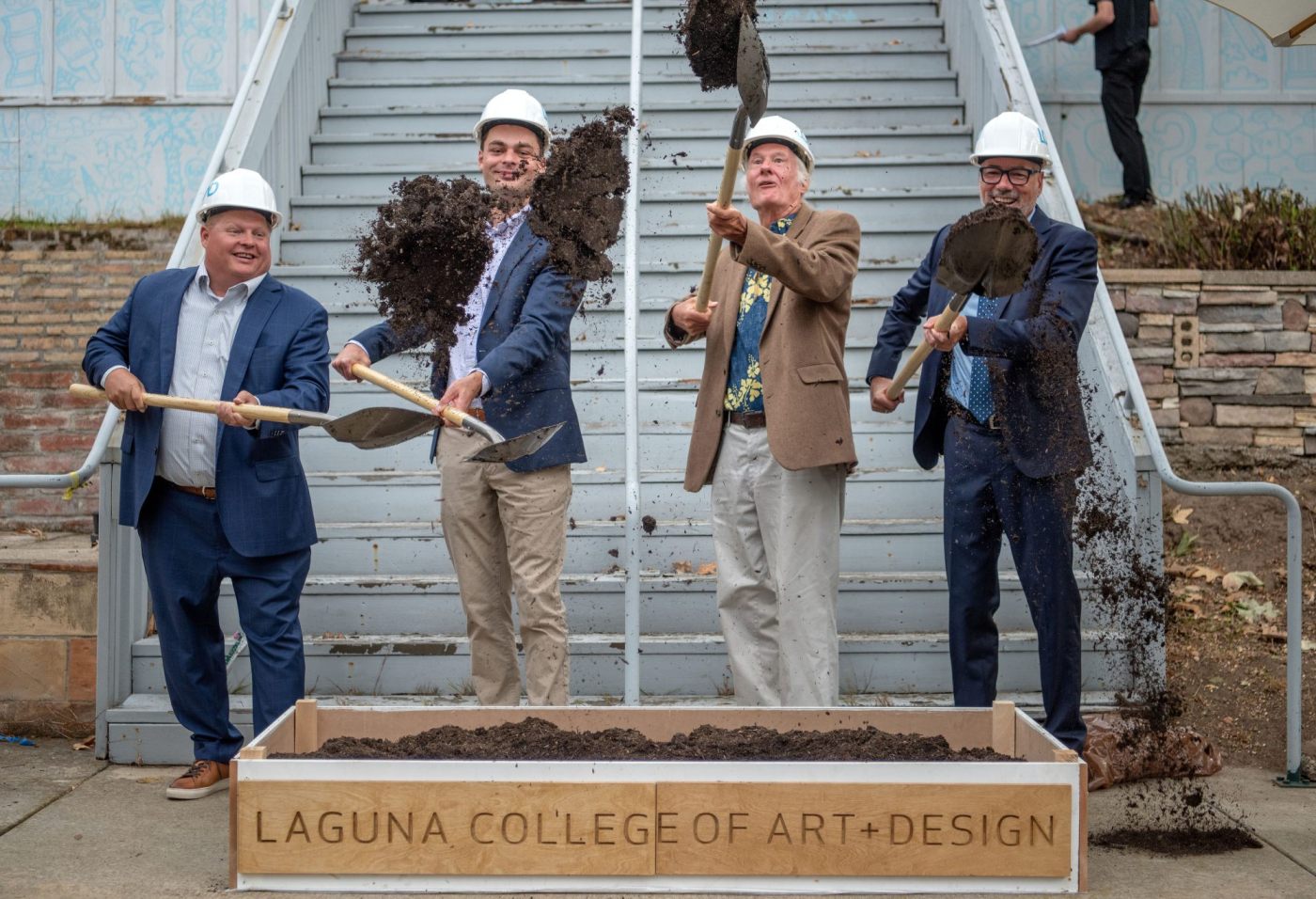A plan five years in the making to consolidate Laguna College of Art & Design’s teaching campus in one spot along Laguna Canyon Road is moving forward.
A local benefactor, Patrick Quilter, founder of QSC Audio and Quilter Labs, who the college’s president said believes in LCAD’s vision of educating students in art and graphic design so their degrees can translate seamlessly into jobs in the Southern California economy, announced a $40 million donation on Sunday, Sept. 21, coinciding with the groundbreaking for the new 22,000-square-foot innovation center at the college’s Big Bend campus. Quilter has given to the college before.
Steve Brittan, president and CEO of LCAD, said the donation kickstarts a $100 million capital campaign to consolidate the art college into two locations: the Big Bend campus and at the original 1961 site of the college, when it opened as Laguna Beach School of Art, born as an extension of the growing community of plein air painters in Laguna Beach.
“LCAD has been organically grown up and down the canyon and the experience has not been great for our students,” Brittan said. “Now we can bring all academic spaces onto the Big Bend Campus and the innovation center kickstarts this. It’s going to be a very exquisite design and communal space with lots of places to display art and creativity.“
From a first graduating class of 15 students, the college has grown to 750 students who are pursuing bachelor’s and master’s degrees.
“As we’ve grown, we’ve retained the core of our founding to understand the fundamentals of being a good artist,” Brittan said. “And, also, bringing in the design fields that allow them to provide different skill sets that apply to many of the growth sectors that are strong in Orange County and L.A., which is the entertainment industry, design, illustration and game development.”
“Through all of these majors, we collaborate with surrounding industry and create these wonderful partnerships for the college to be able to allow students to problem-solve in real life,” he added.
For example, with UC Irvine’s School of Medicine and the National Institutes of Health, LCAD students have projects working in graphic design, data, and visualization on programs related to cancer research, preventive care, and DNA research, he said.
Brittan also points to a collaboration with John Waye Airport and the airport’s efforts to improve its logo, indoor and outdoor event spaces, and its bistro cafes.
The airport has a five-year $700 million capital improvement campaign in the works, and LCAD students and faculty are working with the airport director and her team to redesign some of the concession spaces, while also exploring other projects within the airport as part of the collaboration, he said.
“We’re engaging with the community, we’re engaging with institutions and industry in the region to provide this bridge for what the students are learning in the classroom to the workplace,” he said.
These goals and vision, Brittan said, resonated with Quilter, who he said has known the college for a while and “liked the vision and the fact that the innovation center was ready to go.”
The new two-story center will be the centerpiece of the college’s academic study and will tie together three buildings already on the campus.
Getting to Sunday’s groundbreaking has taken college officials five years of planning and permitting, Brittan said.
The classrooms, which will be located on the upper level of the building, are designed to have students from all majors interact, he said.
“This is an opportunity for us to meet the future in a way that allows students to really experiment and explore new ideas through the new technologies,” he said.
There will be a print lab and fabrication area equipped with state-of-the-art large-scale printers.
The building is designed to be as communal as it can be, Brittan said. On the ground floor, there will be a cafeteria, gallery space, and a multi-purpose space with a capacity to hold 300 people for lecture-type events.
Construction is scheduled to begin in January, with plans to open in June 2027.
With the expansion and main academic campus at the Big Bend location, Brittan said it will allow the site of the original college, closer to the ocean on Laguna Canyon Road, to become student housing.
While the plan is in early stages and just recently proposed to the city, Brittan said student housing is essential.
“We have not got affordable housing anywhere and our students are struggling to find homes with Laguna Beach being so expensive,” he said. “In the next five years, we hope to build a sufficient number of beds to provide almost half of the student population affordable housing on the campus.”
“Everything we’re in discussion now with the city, and the community,” he added, “is to allow us to build out all the spaces and needs for the next 50 years.”







